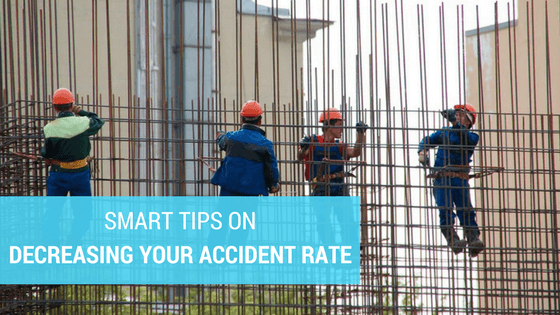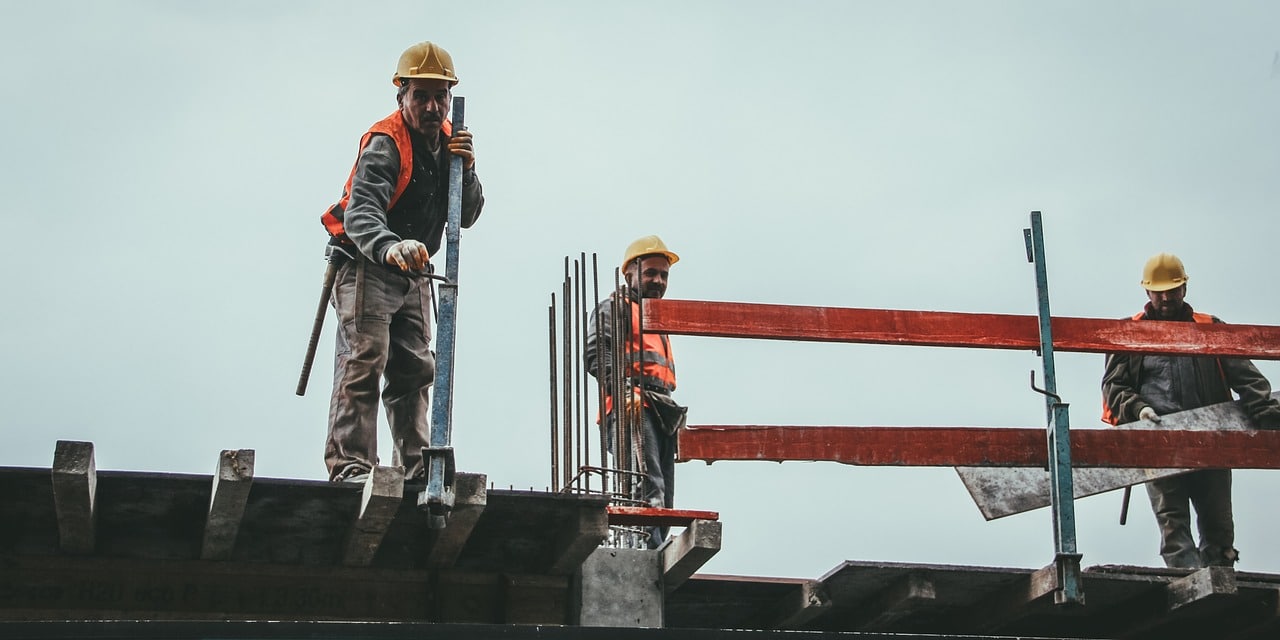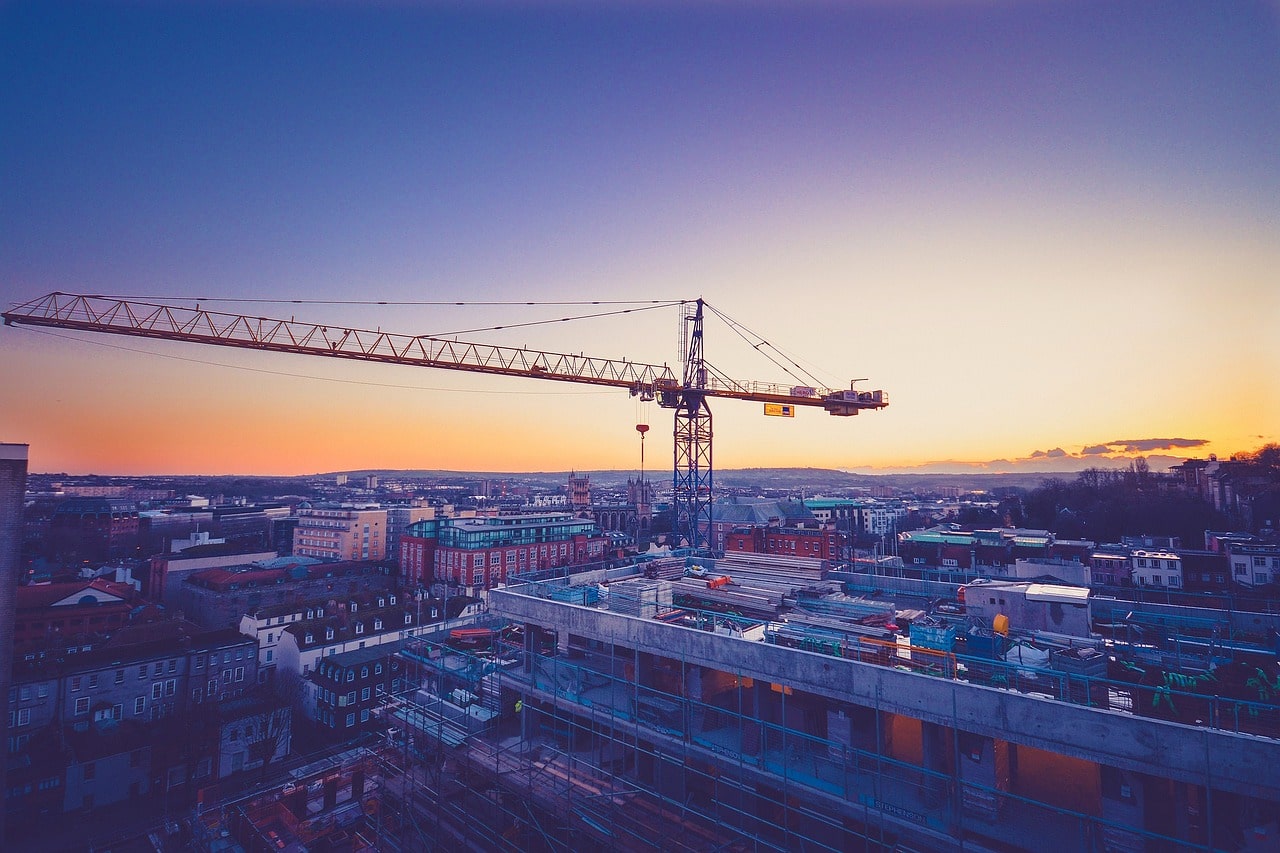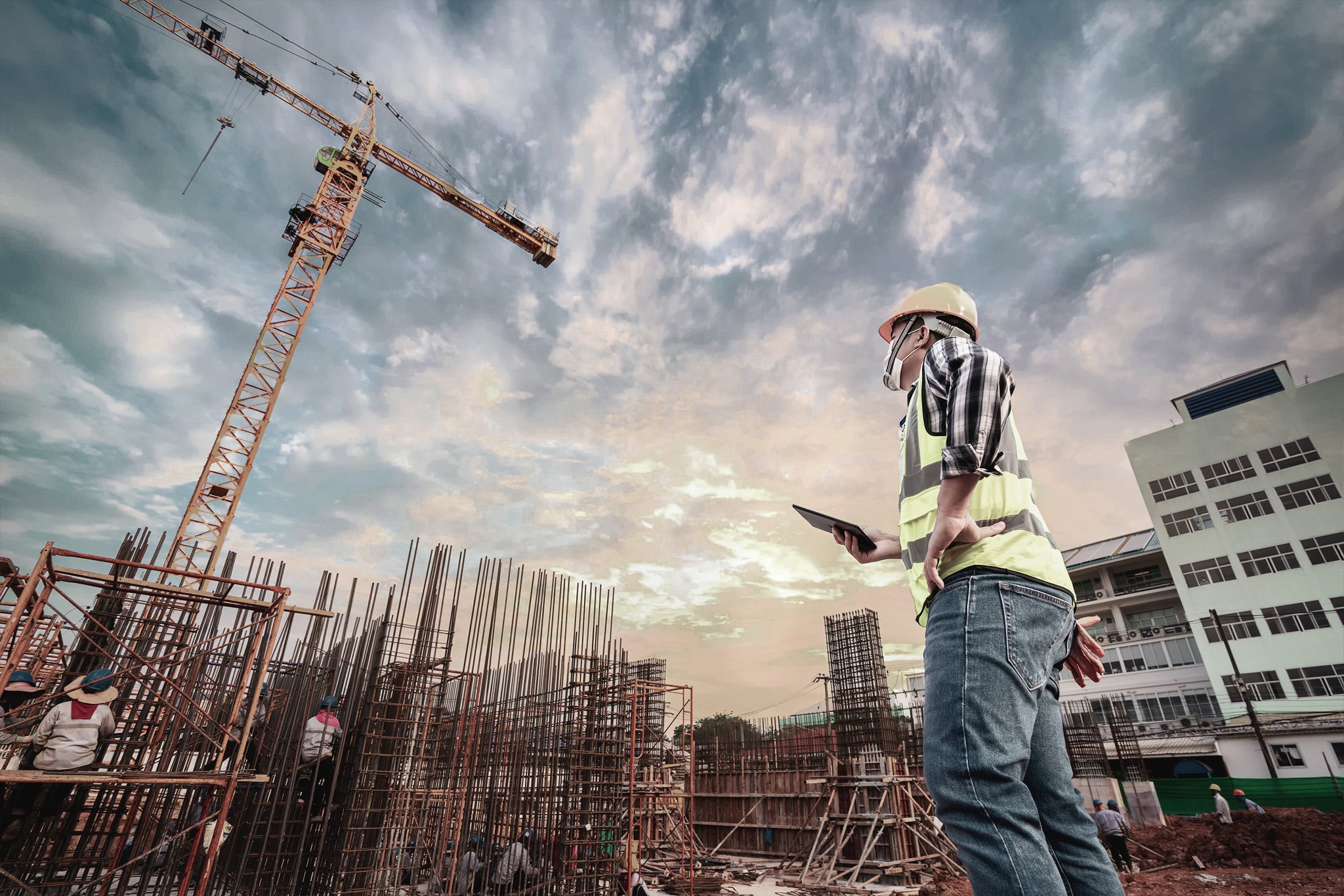Construction is one of the most dangerous industries in the world. In 2015, according to the Occupational Safety and Health Administration (OSHA) 937 workers lost their lives on construction sites, only in United States . The Fatal Four (falls, electrocutions, struck by object, caught in/between) represent between 65% of the causes of deaths.
“Eliminating the Fatal Four would save 602 workers’ lives in America every year.” -OSHA
Why the accidents occur?
When working in the same construction site for months, it is natural to get used to the environment. Every little piece of equipment can quickly become dangerous for you and your work mates. It is this moment that it is important to be more attentive. A non-compliance with the safety rules and issues of the equipment are the main origins of the accidents, which can become fatal.
Site managers have to go around the site looking important, but while they are at it, they have to keep aware of everything that is going on! Having no accident is impossible, but the 9 following advice can help to reduce accidents on a work site.
1. Site Set-Up and Safety
First of all, make sure that the layout is designed with safety in mind. Keep your site safe:
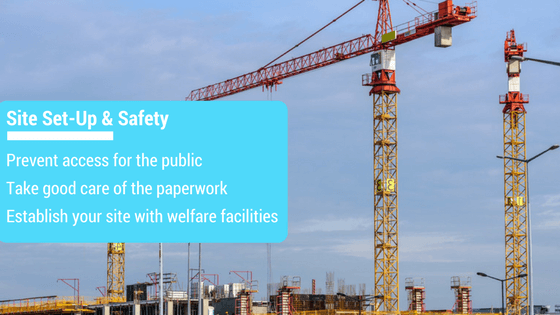
– Verify if all the welfare facilities are there: toilets, drinking water, lockers and changing rooms
– Secure the site: establish limits between pedestrian and vehicle routes, and prevent access for the public
– Verify all the paperwork and stuff that you need to work on the site: induction forms, permits to work, first aid kit, accident book, health and safety law posters and sign.
2. Site Induction
At least in the UK, and probably in most other countries these days, when people arrive on site for the first time they have to be given a Site Induction. This involves informing them about the special health and safety aspects of the site and what they must and must not do. It is also an excellent opportunity to assess the ability of these men to look out for their own safety. This induction may take up some time, but it is an important step in order to avoid accidents.
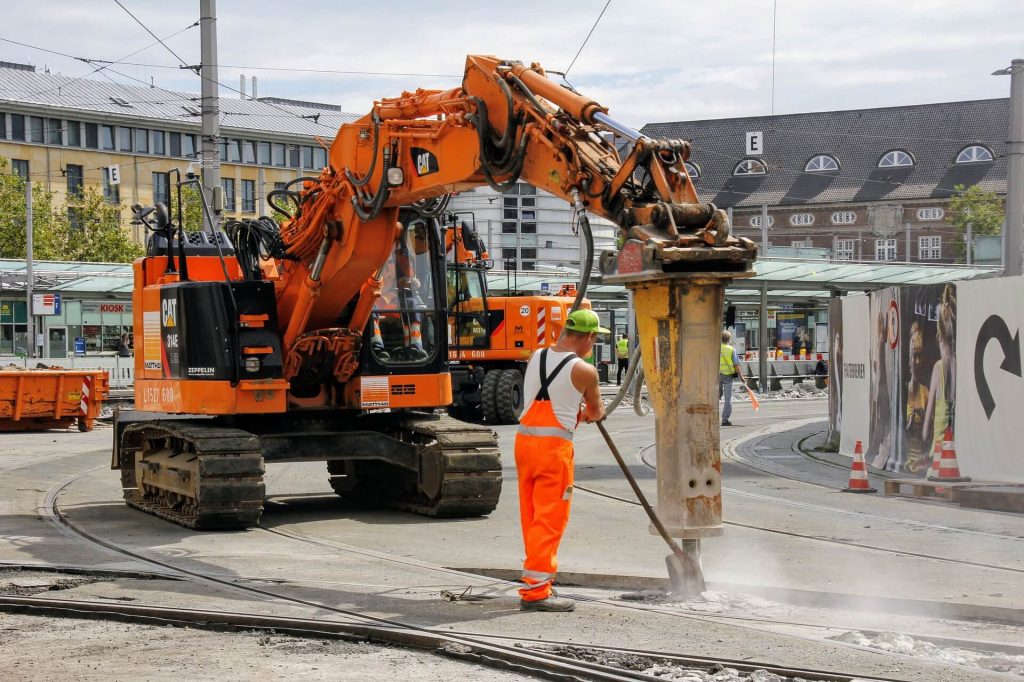
3. Documentation
When we are talking about documentation, we are referring to their H&S documentation. In the UK, this includes their Construction Skills Certification Scheme (CSCS) Card. This will tell you what exams they have passed and what type of work they are qualified for in a construction site. The other thing to look for is a First Aid Certificate, just in case! It might even be beneficial to have a look at their trade certificates if they have any. Verify that all the drivers have their driving license.
4. Training
The perceptions of risk keep changing, so make sure your men’s education is up-to-date. Another thing that you want to pay attention to, is on-site training. One big threat to your accident rate is new apprentices! We were all young and foolish once, but don’t we wish we didn’t get youngsters on site! They have to be carefully watched until their sense of self-preservation is developed. Things like if they are to cross a vehicle access route, stop and look both ways. Up ladders: one hand for the job and one hangs on to the ladder for safety.
“ In US, the construction industry is second only to agriculture in the annual number of fatal injuries in workers less than 18 years of age.” -NCBI
Read More: Mental Health in Construction
It’s also important to ensure that all the members of the construction site (employees, contractors, managers and supervisors) have completed a health and safety training. There are a lot of courses which can benefits to your company.
Working at height: don’t lean over the rail to admire the view! You must be prepared to protect all your employees. The safe use of tools is very important: select the Proper PPE and inspect it before starting to work.
5. Communication
Communication is one of the most important things to prevent accident rate. First thing every morning, have all the Foremen and Ganger Men congregate in the Site Office. Give them a quick briefing on anything unusual likely to happen that day. You can also organize brainstorming sessions about the best ways to avoid accidents. You should ask your team to give you feedback about the possible risks. It’s really important to create a culture of safety in the construction site.
It used to be that all these people were issued with hand-held radios; today they have their mobile phones. Make sure that everyone has everyone else’s numbers, so communication can be fast and efficient.
[clickToTweet tweet=”Here is how you can keep your #construction #site safe! ️” quote=”Here is how you can keep your #construction #site safe! ️”]
6. Proper Equipment
Make sure all equipment on site is suitable for the purpose and well maintained. This includes safe storage of materials. A pallet load of bricks falling on someone is not good news! Make sure all plant and machinery is suitable, well maintained and well handled. Reversing vehicles; always make sure someone is behind it, signalling it on and keeping pedestrians safe and out of the way. Then there are the tools that the men bring with them on site. Are these all suitable for the tasks and well maintained?
Finally there is the non-work stuff to consider. If working on contaminated land, are there adequate decontamination facilities such as specialist clothing to don on entry, and shower facilities when exiting the contaminated zone? Take a look at this video about how to inspect safety equipment:
7. Supervision
On the walkabout, we are making gentle corrections to activities and practices which may possibly lead to an accident. We are also looking for something more dangerous! “The man who is an accident, looking for somewhere to happen!” Now, if we have paid proper attention to all the forgoing, this will be a new development in someone’s working practice and approach to accidents. Instantly stop him working on whatever he was doing!
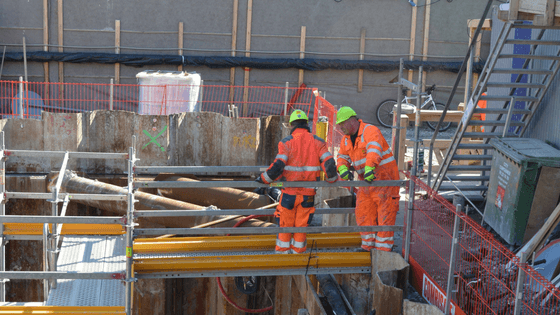
Take him into the office for a private chat. What you’ll usually find is that it’s his private life that is in turmoil and has got him screwed up! Family member terminally ill in hospital; house gone up in flames; van written off and no cash to replace it – things like that. Be sympathetic; don’t fire him, but offer him a short-term simple and safer job such as laborer for the site welfare facilities. He’ll be very grateful and the rest of the workforce will be even more safety conscious and think you are wonderful!
8. Innovation
We have seen innovative ideas and legislation that has made construction sites far less prone to accidents. Safety helmets; goggles; steel toecaps; safety barriers; warning signs – and the list goes on! Just be aware of innovations coming about, which will make your construction site less prone to suffering any accidents – and implement it.
These innovations can be brought about by new legislation or simply by a new invention someone has come up with. Don’t try to avoid any expenditure the implementation of these innovations may incur!
Find Here: What To Do When Your Project Goes Wrong?
9. Transparency
What we often see these days are notices on site perimeter fences showing the number of site accidents there have been on the project. This is really good and improves the perception of construction in the minds of the general public. But what should never be done is attempting to cover up an accident that has occurred!
The information will leak out anyway and results in the company getting a dreadful reputation, and not getting invited to tender for future work! Worse than that, though, for the site manager! He has a legal responsibility for health and safety on the site and, when HSE get to hear of the accident and following cover up, he will be looking at a jail sentence!
[clickToTweet tweet=”Here is how you can keep your #construction #site safe! ️” quote=”Here is how you can keep your #construction #site safe! ️”]
Conclusion
These are different ways that can reduce the numbers of accidents. With the right training and effort, you may be able to transform the construction site to a workplace that is as safe as possible.
For the workers, it’s important to respect the rules that have been implemented. For the site manager, he has to be aware of what is happening on the construction site and be very attentive. If everyone follow all the steps, the accidents will be considerably reduced.
Text written by: Hugo Viguier
